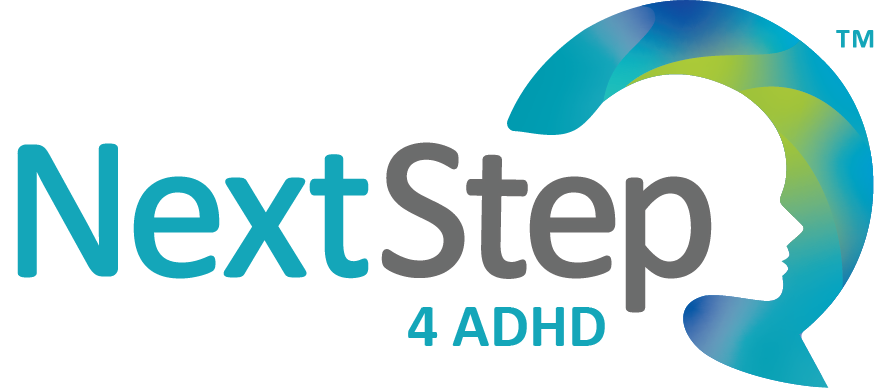
How to Be Productive Working From Home When You Have ADHD
If you have recently found yourself working from home for the first time, you’re not alone. Over the past few weeks, many businesses have shifted to remote operations in an act of solidarity. When you have ADHD, though, working from home can present new challenges, such as avoiding the distractions of home.
Here at Next Step 4 ADHD, we are proud to offer support and tips to help you thrive, whether you’re working at the office or from your new home office.
Keri Knight, LCSW has curated a list of several tips to help you adjust to working at home so you can continue to be productive.
Focus on This Transition
Transitions are difficult with ADHD, whether that’s small transitions from one activity to another or larger transitions such as shifting between home life to work life.
Working from home means that you may need to create transitions for yourself. This means finding a way, with a routine or ritual or activity, to signal to yourself that it’s time to stop what you’re doing and move on to the next activity.
For example, let’s say that you plan to be done working at 5:00, and at that time you want to begin making dinner. But what if 5:00 rolls around and you’re hyper-focusing on your work and you don’t want to stop?
One strategy to try is before you begin working, set a couple of alarms (or three or four) that signal it’s time to stop working. So the first alarm will go off at 4:30, the 2nd at 4:45, and the third at 5:00. You know when the third alarm goes off that you absolutely must stop working so that you can begin dinner and your children aren’t whining that they’re starving. You force yourself to stop what you’re doing, go to the bathroom, get a drink of water, take a quick walk, anything that gets you transitioning to another activity.
Create the Right Environment
One of the best tips for staying productive is to feel like you’re at work. Creating the right environment helps you separate “work” from “home.” In other words, going into your office space (whether it’s a home office or just a work desk in a corner of the living room) signals to your brain that it’s time for work.
Keep these tips in mind as you start to create a work-at-home environment:
- Have a designated place where you work
- Clear clutter and eliminate distractions as much as possible
- Gather what you need before you start working
- If you keep a notebook on your desk or near you while you’re working, it will help you capture any random thoughts or to-do items that pop into your head that would otherwise cause you to abandon the task-at-hand and get up to take care of that stray thought.
Set Work Hours
When you have a place of employment, you have boundaries and guidelines, such as work hours, an office to meet co-workers or hold meetings, etc. All of these things provide an external structure for you. When you don’t have other people (such as your boss) creating boundaries for you, it can be difficult to manage your time.
When you work from home you have to create as much external structure as you can for yourself. Set specific times for events such as:
- Your start and end time for the day
- Schedule meetings and appointments
- Schedule your lunch break and breaks
In addition to setting times to start and end your workday, make your schedule external. This means using a calendar or planner (paper or electronic) so that you can SEE your time. DO NOT keep your schedule in your head. Make it external by writing it down or printing it out. Remember, out of sight out of mind.
Keep a Routine as Much as Possible
No one is suggesting that you turn into a regimented schedule follower — especially if that’s not at all who you are or how you live your life. But having routine makes life easier because you can run on autopilot. Autopilot means you don’t need to use as much energy making decisions and thinking things through. For example, you don’t need to waste time each day deciding what time to start work — because you already know.
Routines that make working at home (and life in general) easier include:
- Morning routines: getting ready for the day and preparing for work
- Afternoon routine: transition routines that ease you from work mode into home mode
- Evening routine: preparing for the next day
- Sleep routine: getting ready for bed
Dress the Part
It’s hard to be motivated to work when you’re wearing the clothes you slept in. There’s no need to put on your business suit when you’re working from home (unless you want to!), but at a minimum, wear “work clothes” that signal to your brain that it’s work time, not tv-binge-watching time. If you normally wore makeup to work or styled your hair, continue to do so! It will help you feel put together, fresh, and ready to tackle your to-do list.
Make Lists and Prioritize
When you have ADHD, one of the greatest lies we tell ourselves is “I don’t need to write that down. I’ll remember.” There’s a good chance you won’t. It’s one of the challenges of having ADHD. Checklists are a great way to organize your tasks and monitor your progress.
Keep these tips in mind:
- Post your list where you can see it, and use it as a checklist. Remember, the more visual the better. Put it where you can see it.
- Don’t rely on your memory to help you know what to do with your time. Working memory is generally weak when you have ADHD, and this means that there’s a good chance you won’t remember everything you need to get done.
Create an organizational system
At the end of the day, your best success comes when you have an organizational system. If you don’t already have a system to help you keep your work organized, do it now. Systems, like routines, help reduce the amount of time and energy you spend.
For example, if your work isn’t organized then you will spend time looking for what you need, searching for important items, recreating work you’ve already done because you can’t find it, rummaging through your junk drawer or under the couch cushions for a working ink pen. Your system should consist of some sort of calendar for appointments and deadlines, a notebook to create lists and keep notes in one place (and not on 50 random Post-It notes), a folder (or folders) to help you organize loose papers. If you don’t like paper, use an electronic calendar, task-list, and folders.
Most importantly, be patient with yourself as you make these changes. Pick one thing to work on at a time. And be kind and gentle with yourself. Change is hard. A lot of change at once is even harder. Speak to yourself like you would speak to someone you love. Offer yourself encouragement and kindness.
If you need help creating a system, we can help. Enroll in the ADHD Academy and learn the strategies you need to create organizational systems. The 5-week Planning and Organizing for Adults Course is web-based and personalized to help you reach your goals.
Questions? We’re Just a Call or Click Away
A lot of change at once can feel overwhelming, but self-compassion can go a long way in easing yourself into this new routine. At NextStep 4 ADHD, we’re happy to provide comprehensive care for ADHD — and you don’t have to come into the office for an appointment. If you’re struggling with the symptoms of ADHD, we offer telehealth sessions as well as a variety of educational courses and resources. Give us a call or send us a message to request more information.
Don’t forget to sign up for a membership so you can stay up-to-date with the latest news!
Related Posts
The Procrastivity Dilemma: ADHD and the Struggle to Get Things Done
For individuals with ADHD (Attention-Deficit/Hyperactivity Disorder), the battle...
Seasonal Affective Disorder and ADHD: 4 Tips to Fight Depression
Do shorter days and darker nights have you feeling a little blue? Seasonal...


